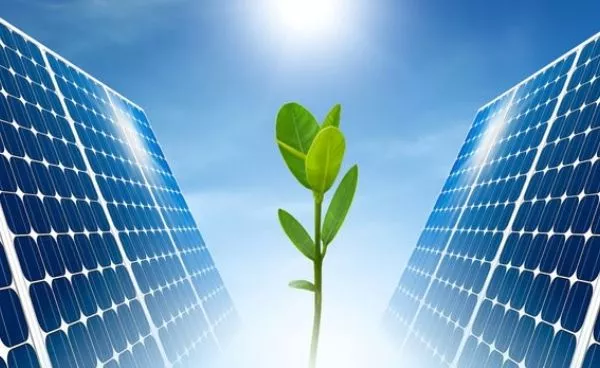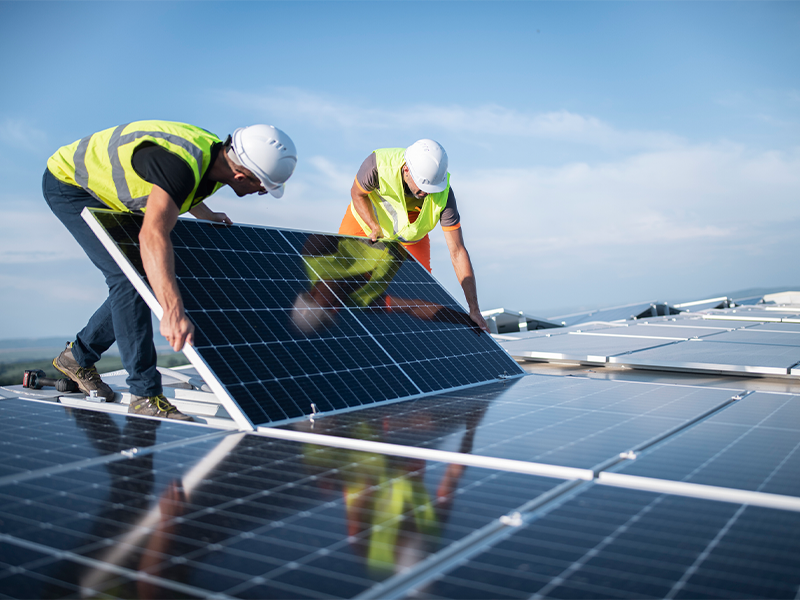Simply Solar Illinois: Eco-Friendly Solar Solutions to Power Your Home
Simply Solar Illinois: Eco-Friendly Solar Solutions to Power Your Home
Blog Article
Solar Power 101: A Beginner's Overview to Sustainable Energy Solutions
As the world progressively changes in the direction of sustainable power solutions, comprehending the basics of solar power becomes essential for both people and businesses. By checking out the benefits of solar innovation, along with the economic rewards and installment procedures, one can gain a more clear viewpoint on how to properly incorporate this eco-friendly source into their energy technique.
Recognizing Solar Power
At its core, understanding solar energy entails realizing the essential concepts of how sunshine can be exchanged useful electrical energy. Solar power is obtained from the sun's radiation, which can be used with numerous modern technologies. The key system for this conversion is the photovoltaic effect. This phenomenon happens when sunshine strikes semiconductor products, typically silicon-based, within solar cells. The energy from the sunlight excites electrons in the semiconductor, allowing them to move freely and generate straight current (DC) electrical energy.

Understanding solar power likewise includes recognizing its ecological benefits. By utilizing sunlight, we can reduce greenhouse gas discharges and decrease air contamination, adding to a much more sustainable future. The innovations in technology and performance of planetary systems remain to boost their feasibility, making solar power a progressively appealing choice for global energy demands.
Kinds Of Solar Power Solutions
Various kinds of solar energy systems are typically utilized to harness solar energy for electricity generation. The key categories include photovoltaic (PV) systems, concentrating solar power (CSP) systems, and solar thermal systems.
Solar systems use photovoltaic panels made up of silicon cells that transform sunlight straight into electrical energy. These systems are functional and can be installed on roofs, ground mounts, or incorporated right into structure materials.
Concentrating Solar Power systems, on the other hand, use mirrors or lenses to concentrate sunshine onto a tiny area, producing warmth that drives a steam turbine to produce power - Simply Solar Illinois. CSP systems are usually deployed in large nuclear power plant and require direct sunshine, making them much less suitable for gloomy regions

Each type of solar energy system has its special qualities, applications, and viability relying on geographical area, energy needs, and budget, making it important to evaluate alternatives based on details scenarios. - Simply Solar Illinois

Benefits of Solar Power
Taking advantage of solar power with Recommended Site different systems not only gives a lasting means to produce power but additionally offers a wide variety of advantages. One of the most considerable advantages is the decrease in greenhouse gas emissions, adding to a cleaner setting and combating environment adjustment. Solar power is renewable, indicating it is limitless and offered as long as the sunlight beams, unlike fossil fuels, which are finite and depleting.
Furthermore, solar power can bring about substantial cost savings in time. Home owners and organizations can minimize their power costs considerably, and oftentimes, they may make credits for excess energy generated with web metering. Furthermore, the solar sector produces jobs, from manufacturing to installation, stimulating local economic climates.
An additional engaging advantage is energy freedom. By creating their very own power, people and neighborhoods can reduce reliance on exterior energy sources, enhancing resilience against varying power prices and supply disruptions. Additionally, solar power systems need very little upkeep, making them a practical choice for lasting energy generation.
Setup Process Review
The setup process for solar power systems typically includes several vital steps that make certain reliable combination into a residential or commercial property. An extensive site analysis is performed to examine the roof covering's positioning, shielding, and architectural integrity, which are crucial to maximizing solar panel efficiency. Following this analysis, the design stage begins, where a tailored solar power system is set up based on the homeowner's energy needs and choices.
When the design is settled, the needed authorizations and authorizations are acquired from neighborhood authorities, making certain compliance with policies. The actual installment includes installing the solar panels on the roofing or ground, connecting them to an inverter, and incorporating the system with the home's electrical arrangement. This stage may likewise entail setting up battery storage space systems, depending on the Get More Info design.
After setup, a thorough examination is conducted to confirm the system's functionality and safety. The system is commissioned, and property owners are educated on its procedure and upkeep. With the setup total, the solar power system can begin producing renewable resource, adding to sustainability and minimizing energy prices. This structured technique makes certain that planetary systems are both efficient and reputable, optimizing their lasting advantages.
Financial Incentives and Cost Savings
Discovering the economic motivations and cost savings associated with solar power systems can substantially improve the charm of making the switch to renewable resource. Various rewards exist at government, state, and neighborhood levels, designed to decrease the initial prices related to solar installment. Among one of the most notable rewards is the government solar tax credit rating, which permits home owners to deduct a percentage of their planetary system setup costs from their government tax obligations. As of 2023, this credit stands at 30%, giving considerable cost savings.
Along with tax credits, many states offer rebates that can even more reduce upfront costs. Some energy business additionally give performance-based rewards, rewarding solar energy manufacturing over time. Funding choices, such as solar finances and leases, permit consumers to install systems with little to no down payment, making solar power much more available.

In addition, solar systems that site can enhance home worths, giving a solid return on investment. In general, the combination of incentives and savings makes solar energy an economically attractive option for many houses.
Final Thought
In conclusion, solar power represents a vital element of sustainable power options, supplying a path toward minimized carbon footprints and boosted environmental security. Eventually, the change to solar power not only promotes ecological obligation however also promotes financial cost savings and energy self-reliance.
Report this page